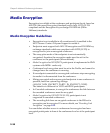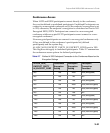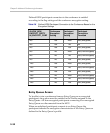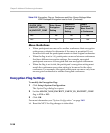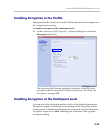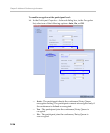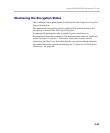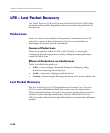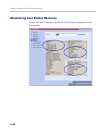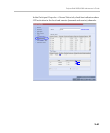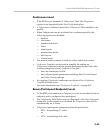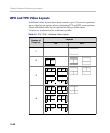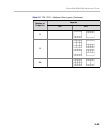
Chapter 2-Additional Conferencing Information
2-38
LPR – Lost Packet Recovery
Lost Packet Recovery (LPR) and Dynamic Bandwidth Allocation (DBA) help
minimize media quality degradation that can result from packet loss in
the network.
Packet Loss
Packet Loss refers to the failure of data packets, transmitted over an IP
network, to arrive at their destination. Packet Loss is described as a
percentage of the total packets transmitted.
Causes of Packet Loss
Network congestion within a LAN or WAN, faulty or incorrectly
configured network equipment or faulty cabling are among the many
causes of Packet Loss.
Effects of Packet Loss on Conferences
Packet Loss affects the quality of:
• Video – frozen images, decreased frame rate, flickering, tiling,
distortion, smearing, loss of lip sync
• Audio – drop-outs, chirping, audio distortion
• Content – frozen images, blurring, distortion, slow screen refresh rate
Lost Packet Recovery
The Lost Packet Recovery (LPR) algorithm uses Forward Error Correction
(FEC) to create additional packets that contain recovery information.
These additional packets are used to reconstruct packets that are lost, for
whatever reason, during transmission. Dynamic Bandwidth Allocation
(DBA) is used to allocate the bandwidth needed to transmit the additional
packets.



